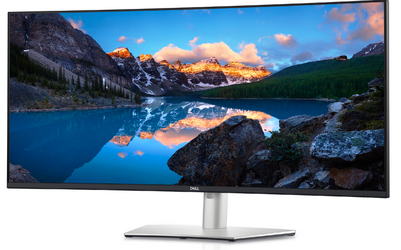- Joined
- Oct 20, 2019
If I had the money I would buy this:

That's a 5K2K monitor. Slight curve to stop your eyes looking like a toad's, excellent colour reproduction. Maximum refresh of 60Hz is the only downside, not really for gamers for a few reasons. But productivity? Incredible. Here's what's so good about it. The height. Most ultra widescreen monitors are very narrow. If you write code, documents, anything other than game really, you want a lot of vertical space. This has that whilst still being wide enough to have a lot of windows side by side. Imagine you're a programmer and you have say, your output window / website to the left, full-height code window in the middle and reference webpages to the right. It would be fantastic and without the low-level re-focusing and context break of switching between multiple monitors. Glorious.
I have similar feelings about laptops which is why I favour the Microsoft surface line. Not because they're the best hardware (though they're decent) but for the simple reason they have taller aspect ratios which is rare to impossible to find elsewhere.
The whole widescreen thing came about through marketing for monitors that could display movies and then later for games. Earlier monitors were square for the very simple reason that for a lot of tasks that really is the best format.
I have a TV for watching movies and videos. My monitor is for work first and I'll happily prioritise that over not having some barely noticed black bars when I dip into a video on my computer.
Dell UltraSharp 40 Curved WUHD Monitor - U4021QW | Dell USA
Redefine productivity on this revolutionary 40-inch curved WUHD 5K2K monitor that delivers exceptional color and clarity.
www.dell.com

That's a 5K2K monitor. Slight curve to stop your eyes looking like a toad's, excellent colour reproduction. Maximum refresh of 60Hz is the only downside, not really for gamers for a few reasons. But productivity? Incredible. Here's what's so good about it. The height. Most ultra widescreen monitors are very narrow. If you write code, documents, anything other than game really, you want a lot of vertical space. This has that whilst still being wide enough to have a lot of windows side by side. Imagine you're a programmer and you have say, your output window / website to the left, full-height code window in the middle and reference webpages to the right. It would be fantastic and without the low-level re-focusing and context break of switching between multiple monitors. Glorious.
I have similar feelings about laptops which is why I favour the Microsoft surface line. Not because they're the best hardware (though they're decent) but for the simple reason they have taller aspect ratios which is rare to impossible to find elsewhere.
The whole widescreen thing came about through marketing for monitors that could display movies and then later for games. Earlier monitors were square for the very simple reason that for a lot of tasks that really is the best format.
I have a TV for watching movies and videos. My monitor is for work first and I'll happily prioritise that over not having some barely noticed black bars when I dip into a video on my computer.

